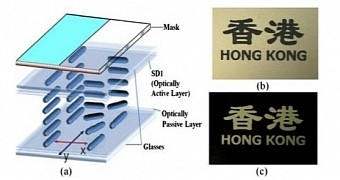Have you ever heard of optically rewritable liquid crystal displays? If you haven't, you're about to, because the people researching this technology have some great news to share with the rest of us.
The term “optically rewritable liquid crystal display” doesn't really do a great job of explaining what the technology is all about.
Not that it's that strange. Most research projects tend to have names that either don't tell us normal folks anything, or they're so long and tongue-twisting that no one bothers saying it all the way.
For optically rewritable liquid crystal displays, the biggest advantage is that they use very, very little power compared to conventional technologies.
The assets of ORWLCD
The biggest is that they don't use electrodes to power the screen, so power requirements are reduced to just what it’s needed to produce a quick flash of light that imprints the image onto the screen.
After that, no power is required to keep the image in place. That's what it means to be “optically rewritable.” The liquid crystals are painted, for lack of a better word, by using light.
For comparison, normal LCDs squeeze liquid crystal molecules between two polarized glass panels and pass currents through electrodes to influence the position of the molecules and how they interact with polarized light.
Low power consumption isn't the only reason ORWLCDs are getting a second glance now, though. The other reason is that the ones researching them have finally figured out how to use them to display 3D images.
And by that we mean real 3D images instead of the alternating sets of images that need to be synched to your eye.
A new way to show 3D images
The researchers divided an image into three zones. Two of them were twisted to the left and right, respectively, by 45 degrees, while the third was left alone.
That done, they passed the image through a special filter that caused the light from the three zones to swing in different directions. You still need glasses, and the refresh rate is atrocious, as is the fact that color isn't supported (only greyscale for now).
But the researchers intend to overcome these obstacles, and once they do, their technology could become the basis for a whole new type of display, one that can be used in everything from TVs to phones thanks to its energy efficiency. It'll be interesting to see how it matches up to OLED and AMOLED, that's for sure.

 14 DAY TRIAL //
14 DAY TRIAL //